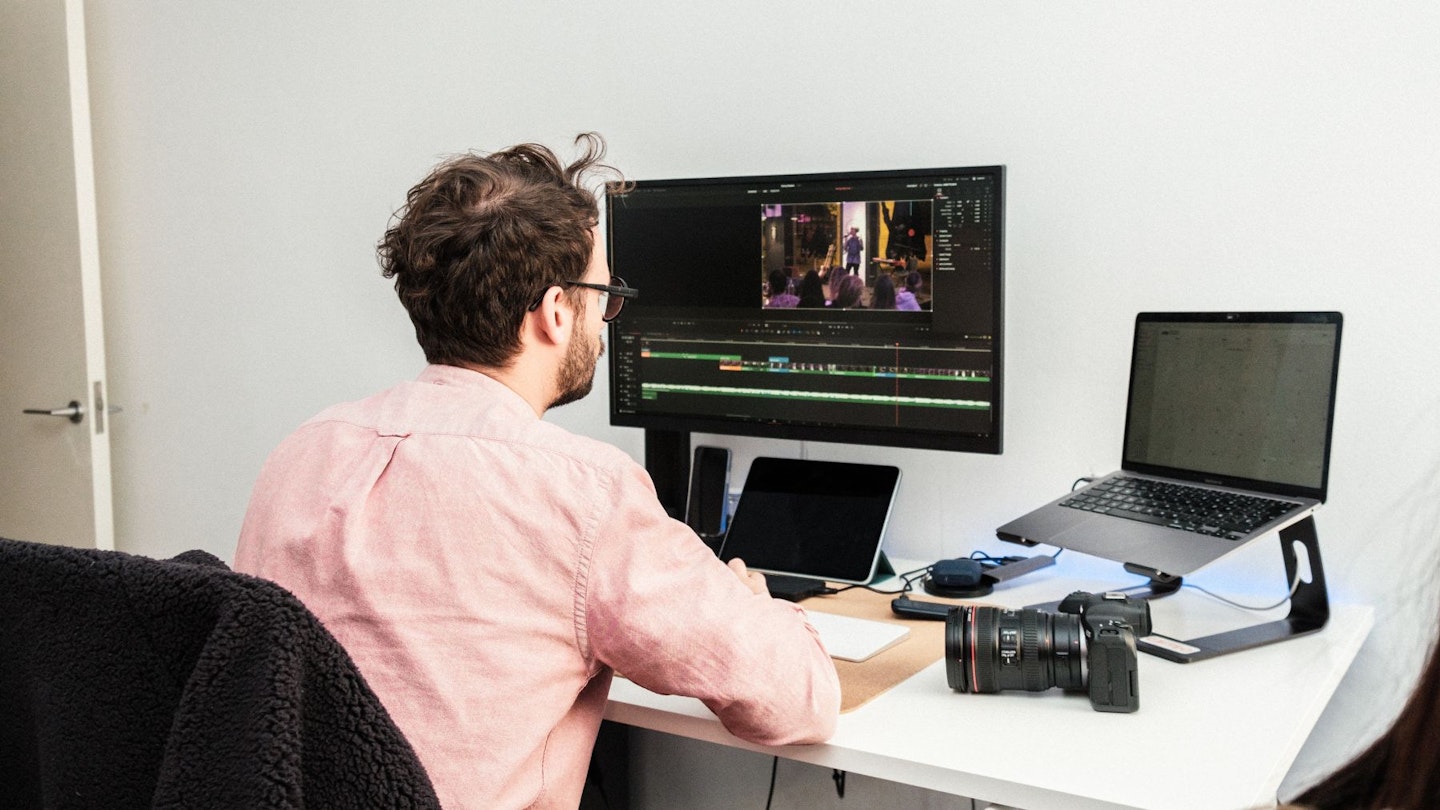When it comes to creating a working setup for working from home, choosing one of the best monitors of the year is a must. While it's unlikely that you'll need high-detail visuals for most work tasks, you can find many high-quality monitors that are suitable for working from home while looking great and not going overboard on budget.
Of course, there are plenty of different forms that monitors can take, and some are better suited for certain lines of work than others. From thin displays with plenty of clarity to wide, curved screens that offer a unique style, there's a monitor design out there for everyone.
The best monitors for working from home at a glance:
• Best overall: Dell S2721NX Monitor - View on Amazon
• Best budget: Philips 222V8LA FHD Monitor - View on Currys
• Best 4K: SAMSUNG 4K Ultra HD Monitor - View on Currys
• Best design: HP M27fw Full HD LCD Monitor - View on Currys
It always helps to know the crucial specs that a monitor should have. For visuals, refresh rate and response time are going to have the most noticeable effect. These represent how often the image on the screen refreshes and how long it takes pixels to respond and change, so a. A higher refresh rate and a lower response time are the ideal combination. You'll also want to consider the resolution, which determines the details and general picture quality of the display. You'll have choices from 1080p up to 4K, so you'll need to factor in display detail versus cost.
To make your decision easier, we've gathered a selection of our favourite monitors to help you select the best model for your setup. Whatever your needs or niche, we're confident that one of these monitors would be ideal for you. We've examined each of their strength and weaknesses, as well as considered factors such as port connections and refresh rate. Convenience, ease of use, and budget have also been weighed up.
The best monitors for working from home:
All prices are correct at the time of writing. Prices, stock and deals are subject to change without notice.
Best overall monitor for working from home
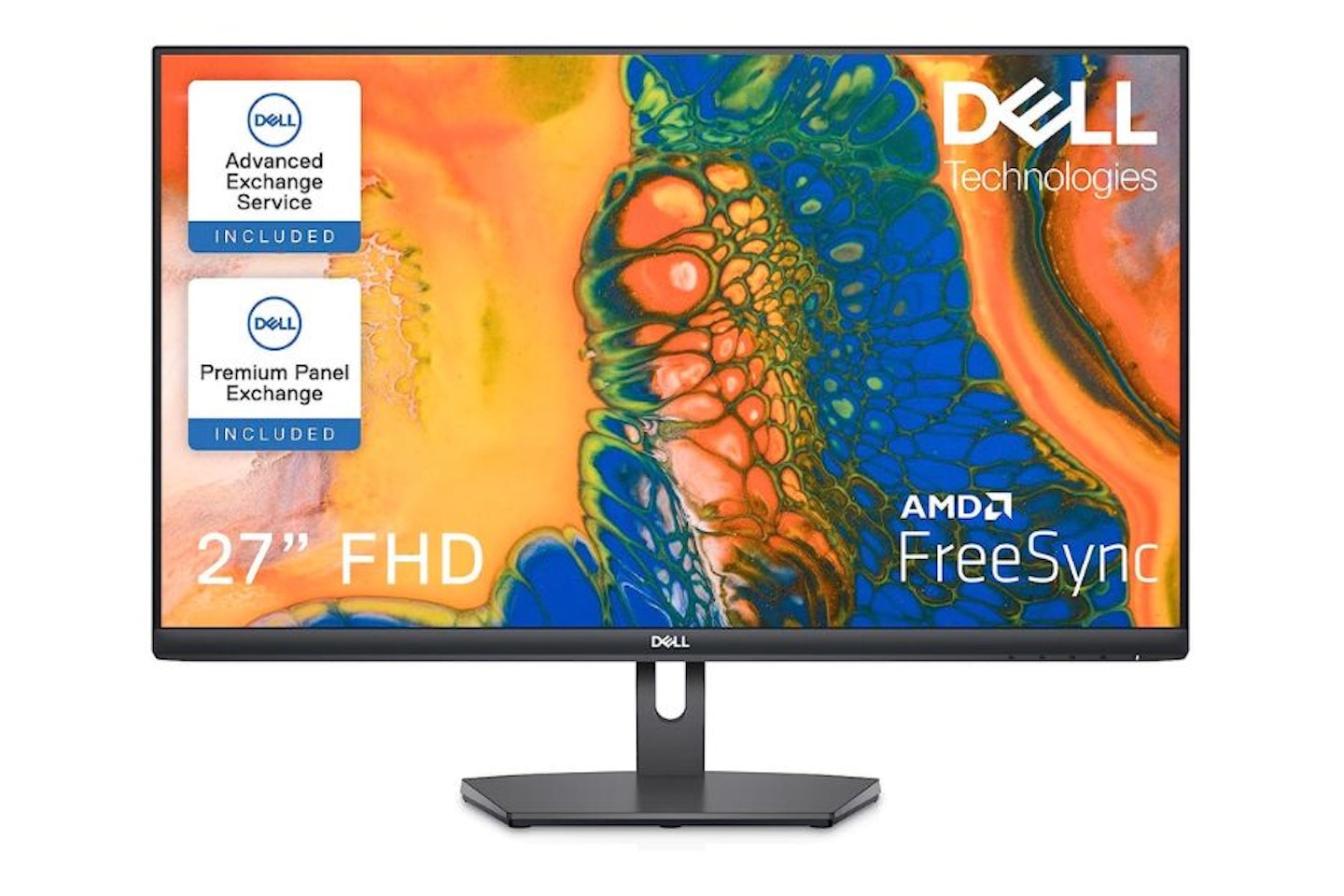 Dell
Dell Dell's S2721NX monitor is perfectly budget-balanced and is excellent for working from home thanks to its clear, comfortable visuals and sturdy design that are bound to last for countless years.
Its 75Hz refresh rate pairs well with the speedy 4ms response time, giving those who are working from home a smooth browsing experience overall. The S2721NX's HDMI ports and placement make cable management simple and tangle-free, which is ideal if you're using multiple devices, where cable tangling is most prevalent.
Sure, the speakers aren't particularly impressive and are perhaps the weakest aspect of the Dell S2721NX monitor, but if your audio requirements are for work calls and not for tasks that require greater precision, it shouldn't be much of a bother.
Pros
- Brilliant refresh rate
- Great value
- Good HDMI ports
Cons
- Speakers are fairly weak
Best budget monitor for working from home
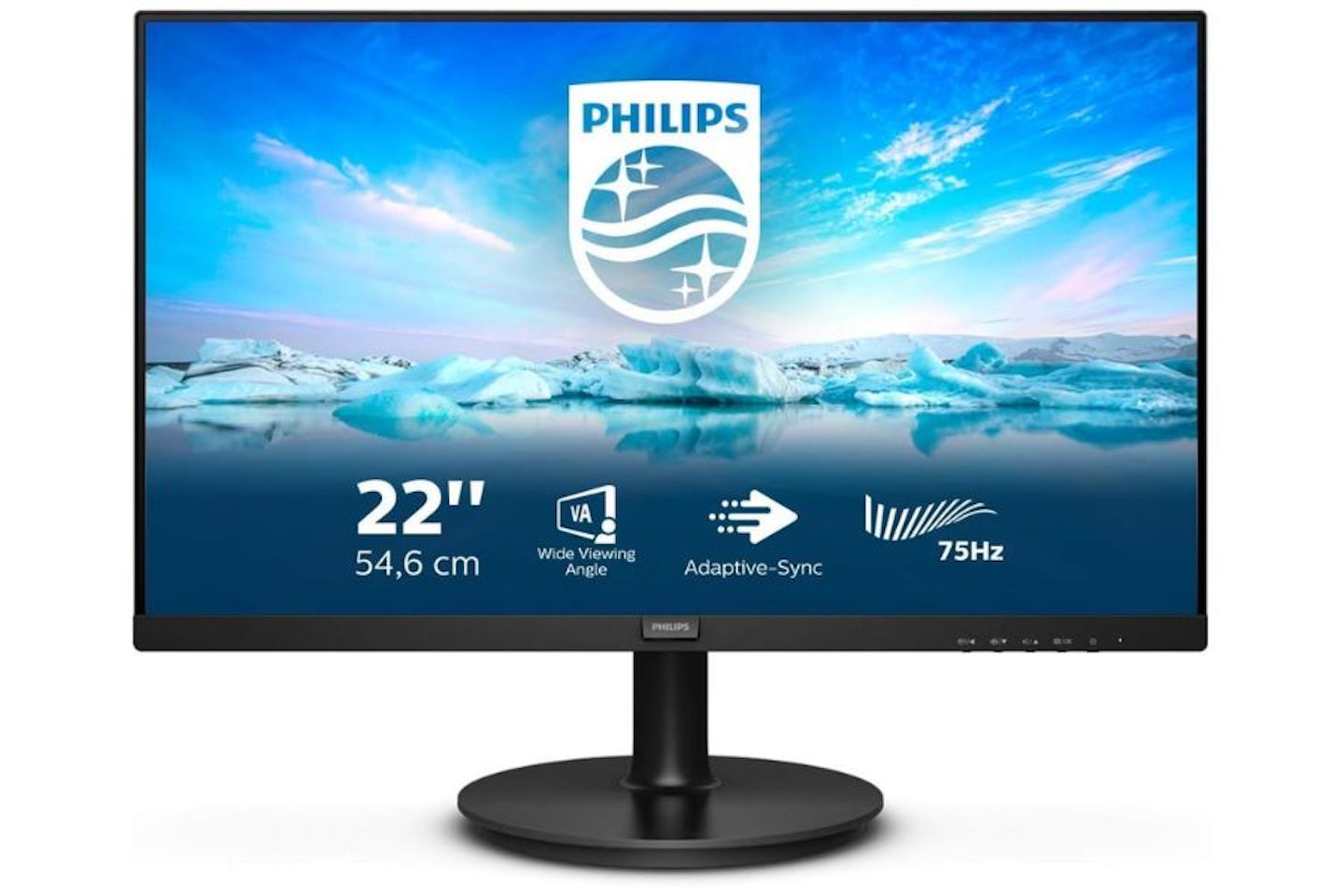 Philips
Philips www.currys.co.uk
Monitors can be pricey, but the Philips 222V8LA FHD Monitor is a fantastic budget-friendly option that still sports great hardware. Thanks to its ultra-thin bezels and slim design, the Philips 222V8LA works well when used as a dual-screen setup, offering plenty of space for rigorous multitasking.
With a refresh rate of 75Hz, a 4ms response time, and solid colour reproduction, the Philips 222V8LA monitor provides excellent performance that's perfectly ideal for working from home. In terms of connectivity, the single HDMI port doesn't leave much for multitasking between devices, which is a problem if you're using a PC and laptop at work, but for most, it's a sacrifice that isn't likely to cause any concern.
That being said, between the resolution and refresh rate, the Philips 222V8LA monitor provides comfortable viewing, solid visuals and a design that's highly compatible with multi-monitor setups, it's one of the best budget monitors of the year.
Pros
- Budget-friendly compared to other products on the list
- Screen quality is great for the price
- Specs competitive with pricier monitors
Cons
- Only one HDMI port
Best 4K monitor for working from home
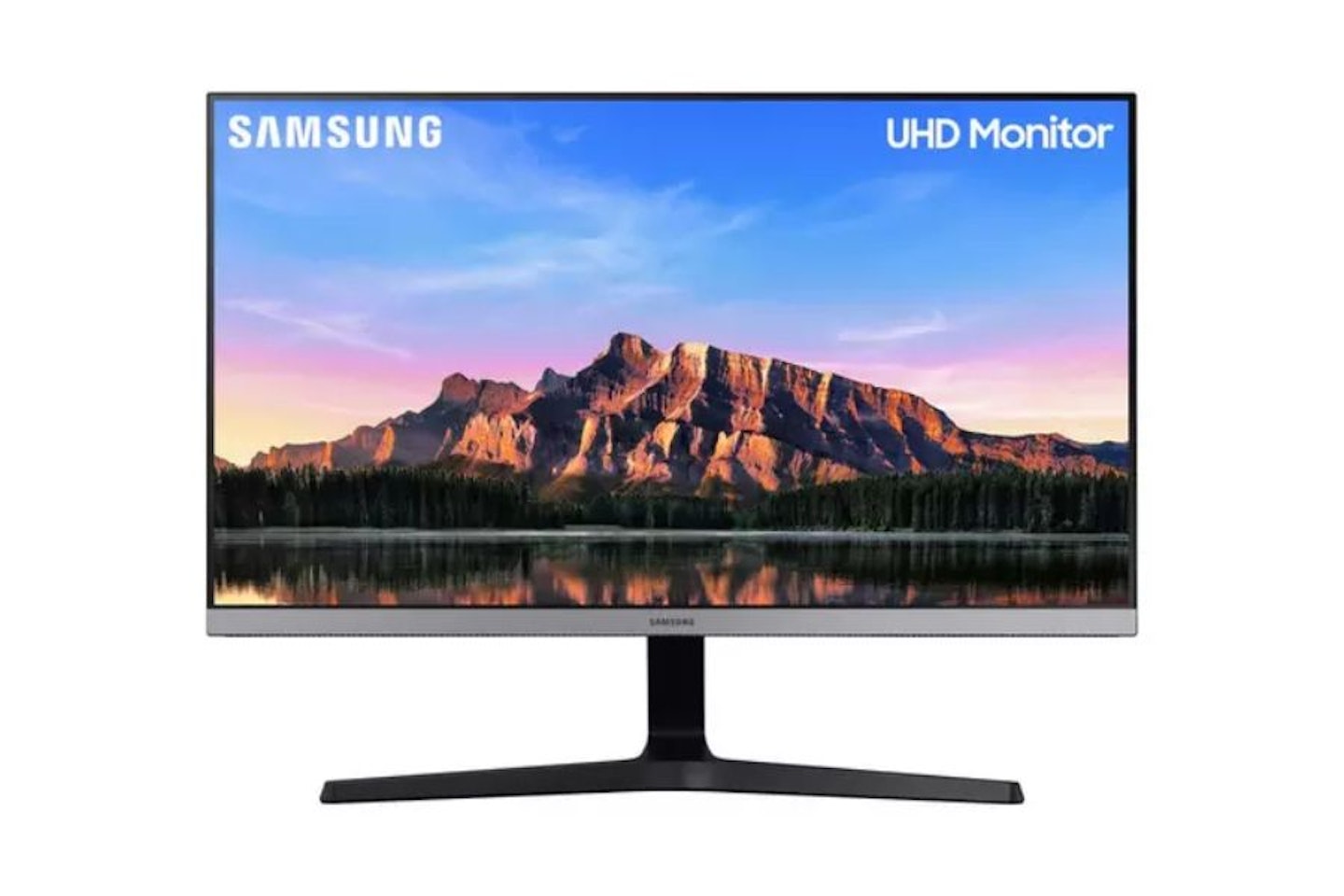 SAMSUNG
SAMSUNG www.currys.co.uk
For those who value a detail-rich and colour-filled monitor experience, the Samsung LU28 is an exemplary monitor with staggeringly good 4K visuals. Quadrupling the resolution of a standard full-HD monitor, the Samsung LU28 is mesmerising to behold, delivering a top-tier visual performance that's perfect for graphic design, photography editing, or just enjoying your favourite streaming shows.
Robustly well-made and designed for wall mounting, the Samsung LU28 is built to last, and its thin stand is perfectly ideal for a crowded desk space, full of peripherals. As for hardware, the LU28 runs at a comfortable, but not extraordinary 60Hz refresh rate, with a response time of around 4ms. As such, performance feels stable but doesn't exceed our expectations.
If there are any gripes to be had with the monitor, it's the lack of height adjustment on the LU28, which offers nothing in the way of versatility and customisation. It's certainly reliable, but its lack of movement may present problems for users in dire need of space for peripherals or who prefer some additional height to their working setup.
Well-made, reliable and beautifully detailed, the Samsung LU28 is a terrific monitor for working from home, giving those who love great 4K monitors a new lease on life.
Pros
- Excellent 4K resolution
- Larger screen size without being oversized
- Great response time
Cons
- No height adjustment available
Best OLED monitor for working from home
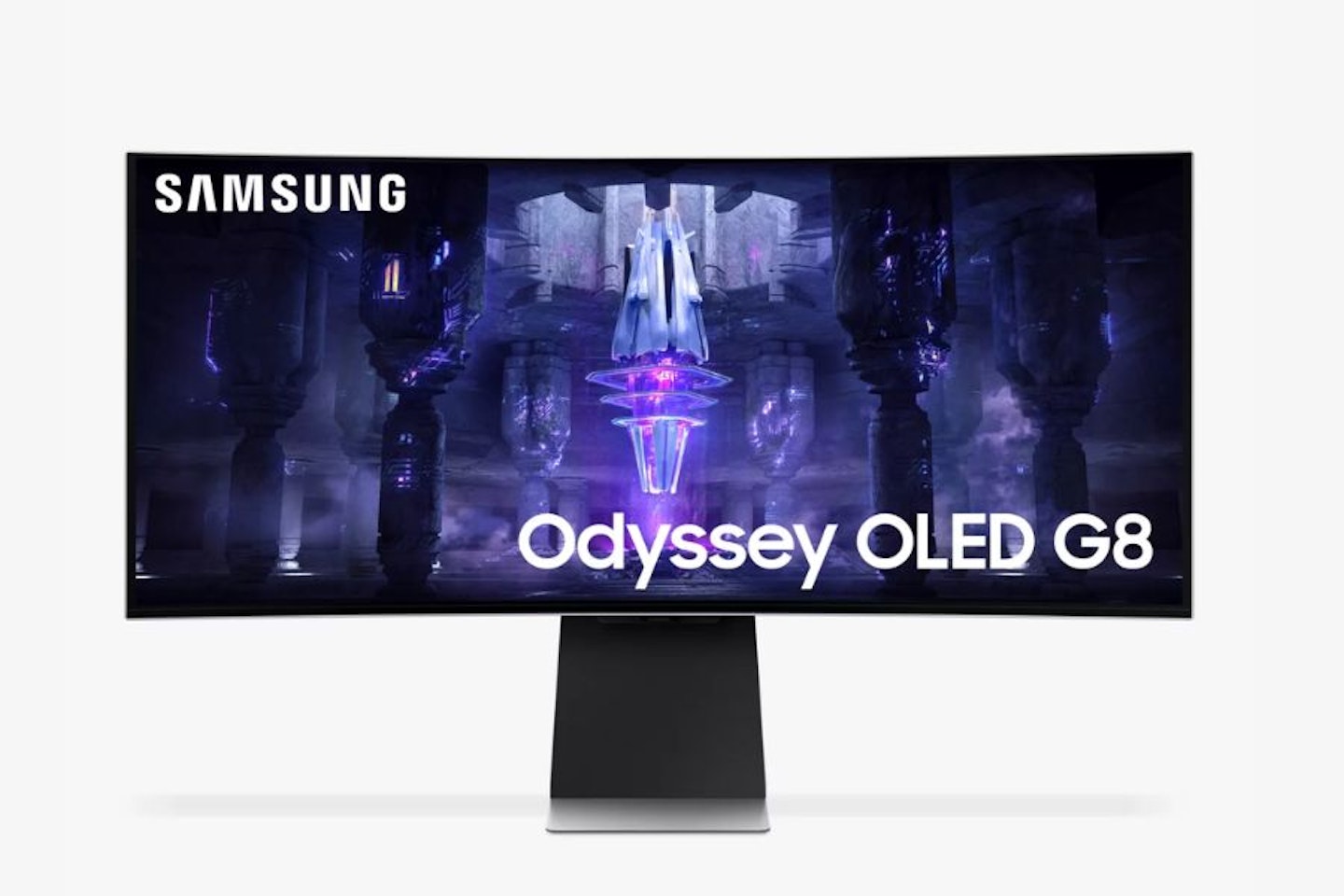 Samsung
Samsung www.johnlewis.com
That's right, an OLED screen isn't a technology that's exclusive to a TV, the Samsung Odyssey G8 features a fantastic OLED display that's sure to please those who love incredible monitor speeds and gorgeous visuals.
The G8 monitor excels in every visual aspect, from its impressive 175Hz refresh rate to the almost unparalleled 0.03ms response time, all whilst being capable of producing over one billion unique shades of colour. A quad HD monitor with superb OLED visuals certainly might not be your first choice for your home working setup, but if you've got deep pockets, it's an option to consider.
Despite its colour reproduction capabilities, the Samsung G8 Odyssey is a quad-HD monitor, which is considerably better than full-HD, but doesn't reach the impeccable heights of 4K. For the price of the G8, you'd certainly expect top-tier visuals, and quad-HD is stunning, but getting a little more out of its sublime screen technology would bring this monitor to new heights of quality.
Needless to say, with its vast array of cutting-edge hardware, stunning design, and gorgeous visuals, the Samsung Odyssey G8 is one of the best OLED monitors ever made, for those working from home, you won't find a better option on the market this year.
Pros
- Rare to see an OLED screen for a monitor
- Incredible refresh rate and speedy response rate
- Fantastic colour support
Cons
- Only quad HD visuals despite price
Best full-HD monitor for working from home
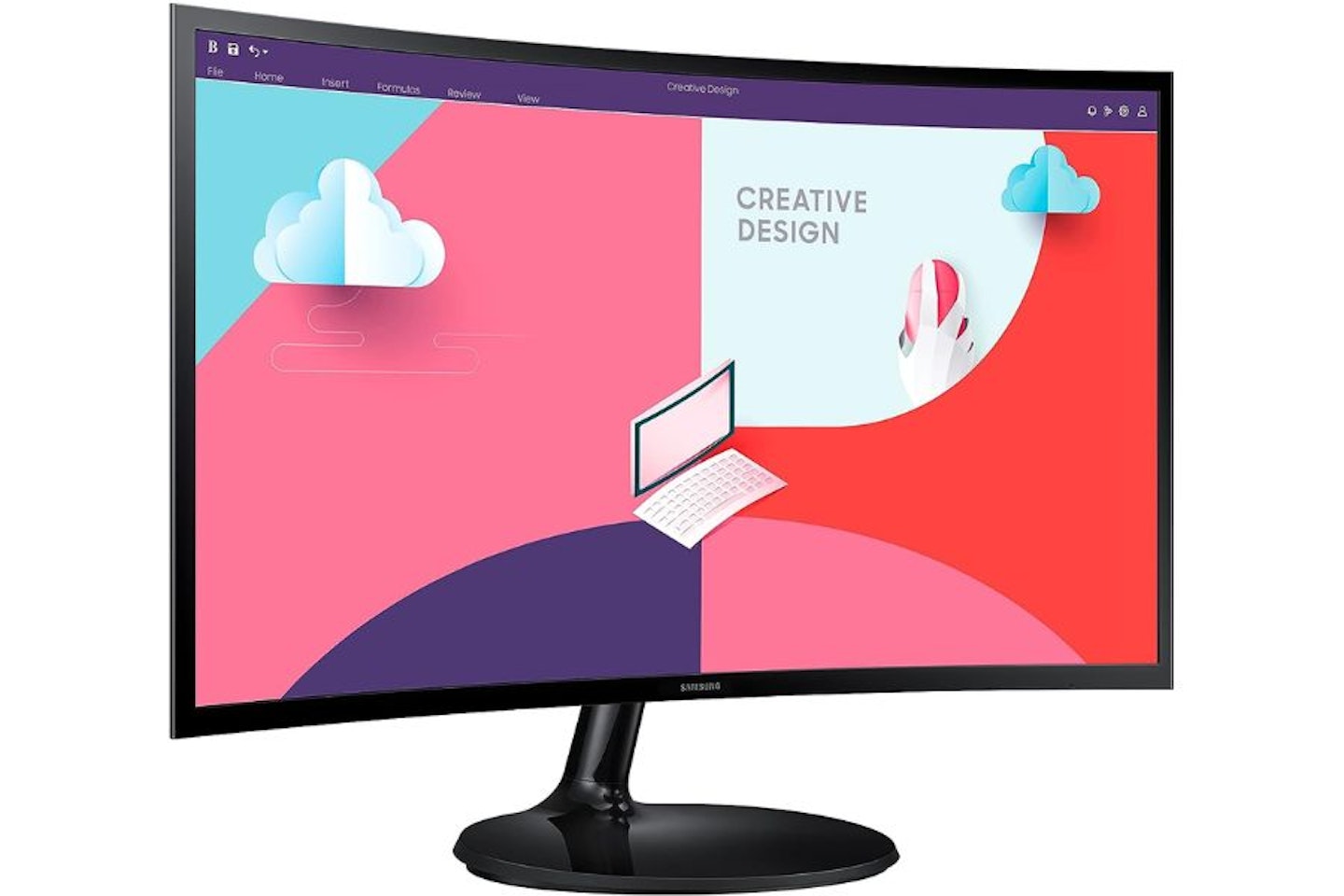 Samsung
Samsung While it's important to separate your work and home life, especially when you work from home, the Samsung LS27C360EAUXXU monitor is a handy piece of kit that you can use for both.
The LS27 is a solid and very stylish-looking monitor that's great for day-to-day work, made even more viable thanks to its curved screen which provides an immeasurable amount of comfort to the eyes, as well as a deeper level of immersion.
Curved screen technology has been on the precipice of a technological boom for some time now, and this year we're seeing this amazing technology becoming available at cheaper and more affordable prices. At less than £200, the Samsung LS27 is a marvel of budget monitors, with respectable hardware capabilities that make it an excellent monitor for working from home.
Full-HD, with a standard 75Hz refresh rate and average response times, the LS27 is ideal for those with bleary morning eyes in need of a comfortable setup to work throughout the day. Though performance isn't mindblowing, it's perfectly suitable for typing away on a Word document, or scrolling through reams of spreadsheets throughout the day. Its array of EyeCare technology ensures that the LS27 is suitable for long hours of viewing, which complements the curved screen remarkably well.
If you're looking for a monitor suited to graphic design, however, you might want to steer clear of the LS27. Curved screens can warp and misrepresent lines and shapes in graphic design software, leading to often bizarre results if you're creating art or designing professionally.
For most of us who are less artistically inclined, however, the LS27 is a brilliant bargain for a curved monitor screen, offering excellent comfort, well-made quality, and solid full-HD visuals for prolonged use.
Pros
- Sleek design
- Suitable for functions outside of work
- Flicker-free screen
Cons
- Curved monitors aren't suitable for graphic design
Best 4K monitor under £500 for working from home
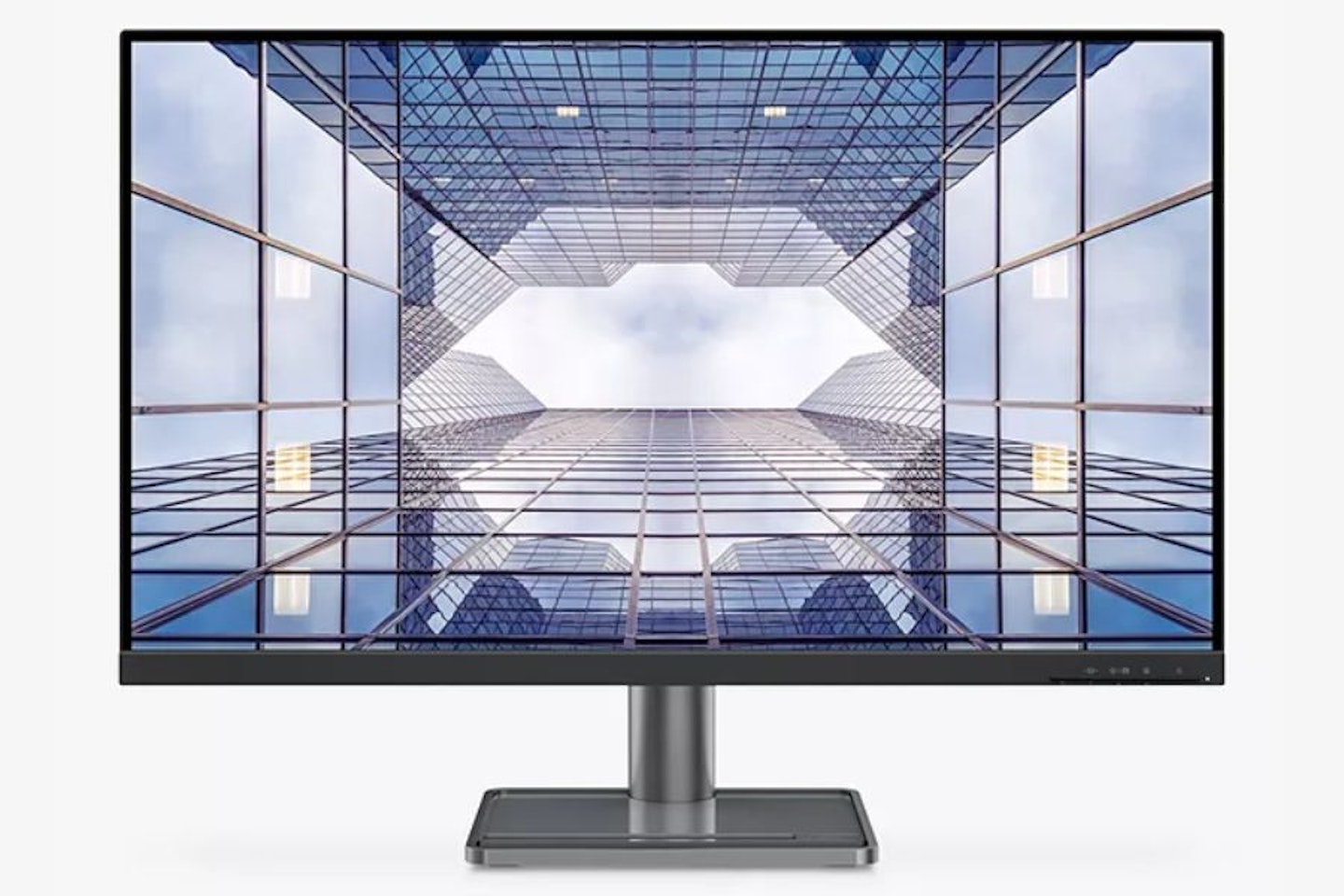 Lenovo
Lenovo www.johnlewis.com
The Lenovo L32p-30 is a fantastic 4K monitor with a UHD LED screen, so strong visuals, and bold colours are a given with this phenomenal screen.
The colour support of the Lenovo L32p-30 is staggering: capable of producing a vibrant, almost life-like picture whilst retaining its smooth and tear-free display, its price at less than £500 is almost baffling. Paired with HDR10, which teases out plenty of detail with its 350 nits of brightness, the Lenovo L32P-30 certainly outperforms plenty of monitor models of a similar price.
As like many 4K monitors of its ilk, however, the Lenovo L32-p offers little in the way of stand versatility: it's practically unmoveable, leaving your screen in a rather static, standard position. For those with plenty of cables to sort, this might be offputting, but for us, it's a price we're willing to pay for quality.
The Lenovo L32-P is a terrific 4K monitor choice for those who value screen quality and solid performance, its display is bright and eye-catching, its design is robust and durable, and it's a great value monitor all-around.
Pros
- Low blue light
- Great display quality with vibrant colours
- Impressive colour support
Cons
- Limited adjustability
Best monitor design for working from home
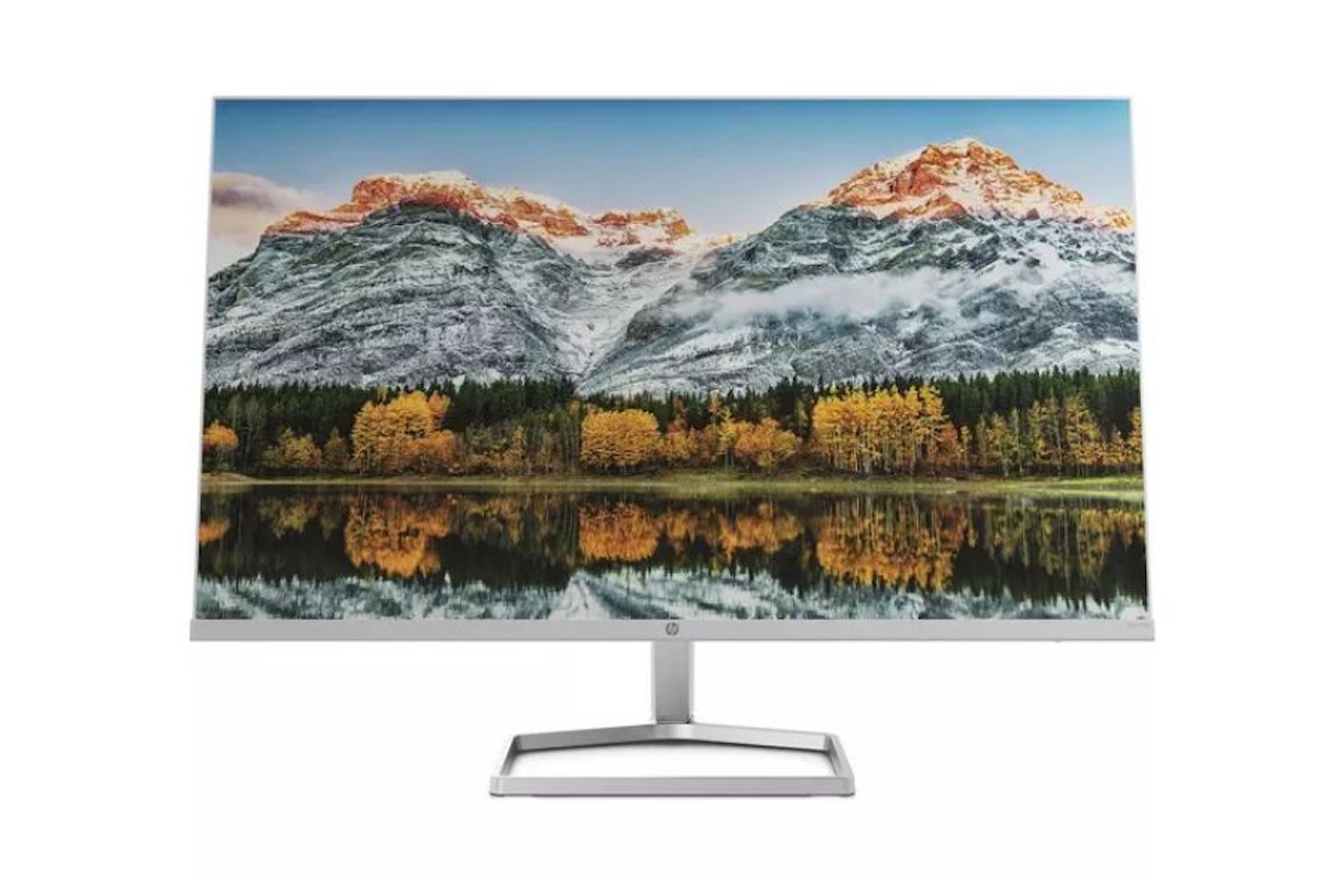 HP
HP www.currys.co.uk
Physical aesthetics may not seem like the most important aspect when looking for a monitor, but the HP M27fw Full HD LCD Monitor makes a convincing case for form over function, its design is truly stunning.
Ultra-thin bezels, a narrow stand and a fine silver finish, the HP m27fw looks phenomenal on the desk, creating a home working environment that feels modern and professional. Its clean aesthetics are only heightened by its fantastic 300 nits of brightness and solid colour reproduction, which draws your eyes in instantly.
Yes, it may have a standard 75Hz refresh rate and an average 5ms response time, but it still manages to feel utterly premium at its price. For something more performance-heavy, you're likely to spend triple the price of the HPM27fw, so a standard refresh rate and response time are a given at its price.
Sleek and shiny, this brilliant monitor for working from home is a bargain at its price and is well worth a dual monitor setup.
Pros
- Very thin bezels
- Easy to setup
- Reliable refresh rate
Cons
- Refresh rate and response times are standard
Best creative monitor for working from home
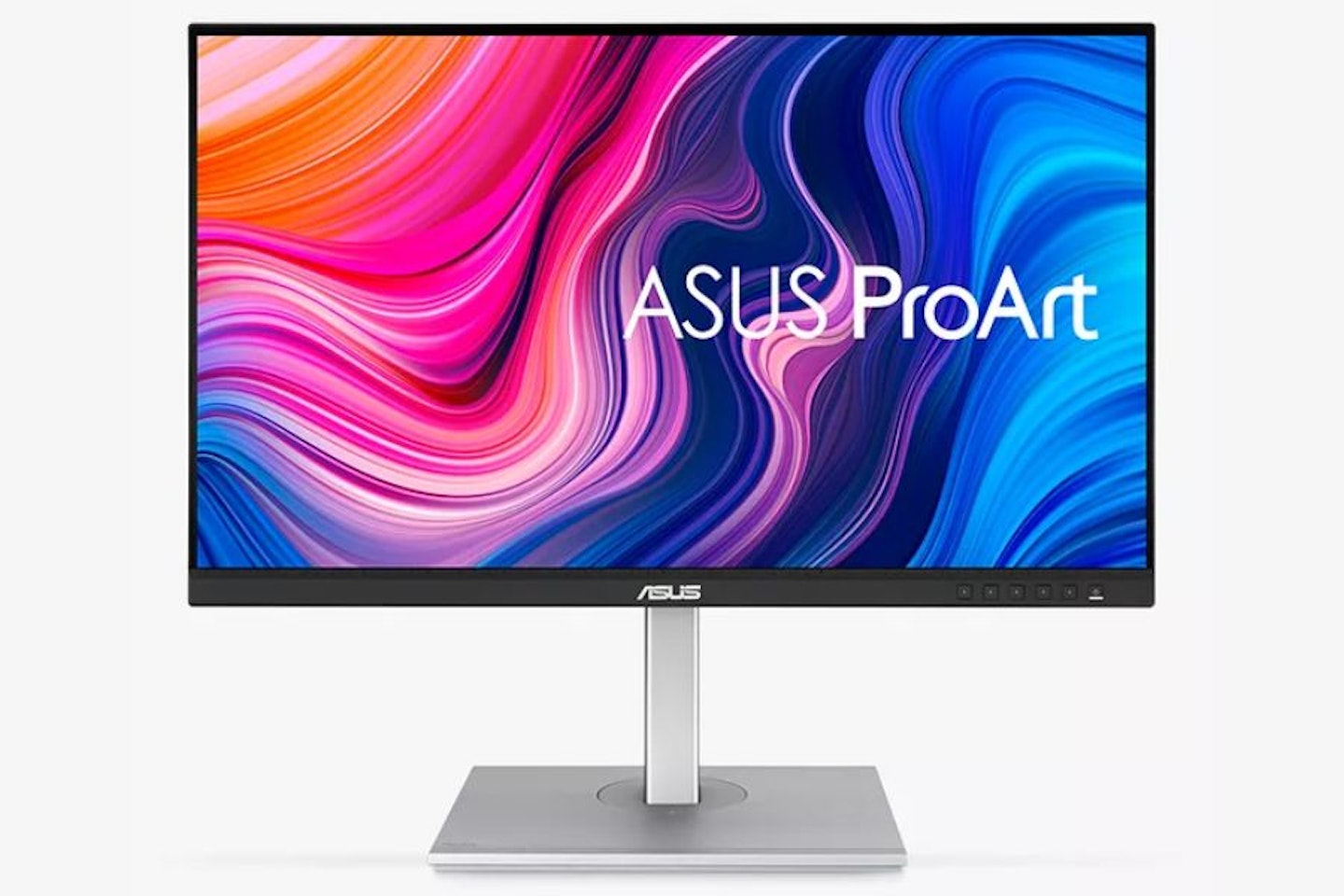 ASUS
ASUS www.johnlewis.com
For those whose work from home involves creative programs such as Adobe Creative Suite, the ASUS PA279CV is ideal for you. At 350 nits, it's quite a bright monitor, and with a 4K resolution, you're getting as sharp an image as possible.
When paired with HDR10, however, you're really getting an experience to remember with the ASUS PA279CV. HDR technology pushes the capabilities or your screen's brightness, creating immense contrast that is otherwise impossible on a standard monitor.
For creative workers, this excellent contrast allows you to create gorgeous images rich and full of detail that are incredibly pleasing to the eye, so it's no wonder the ASUS PA279CV is so regularly used by professionals.
For those looking for strong speakers, however, don't expect to find them with the PA279CV, its onboard speakers are notably poor, offering nothing in the realm of detail, which is fairly normal for a monitor regardless.
All-in-all, the PA279CV monitor is a great choice for creative graphic designers and hobbyists alike, for sublime detail, it cannot be beat at its price.
Pros
- Bright and sharp display
- Lots of customisable settings
- HDR10 is always great to have
Cons
- Speakers are weak
Best curved monitor for working from home
 SAMSUNG
SAMSUNG www.currys.co.uk
For comfortable viewing, gorgeous immersive visuals, and terrific performance, few curved monitors perform better than Samsung's LC27 full-HD monitor, a brilliant choice for those working from home.
Well-priced at just over £200, this curved monitor is a marvel of budget technology, providing a gorgeous clear display and solid performance at a fraction of the cost of typical curved monitors on the market.
Though its performance isn't remarkable with its 60Hz refresh rate and 4ms response time, the LC27 monitor certainly feels smooth and responsive, and it's a great trade-off for impressive full-HD visuals that offer long-lasting comfort.
The real strength of the Samsung LC27 monitor is its Eye Saver mode, which applies a blue light filter to the screen. This makes the visuals easier on the eyes and helps to prevent eye strain when working away for hours at a time.
A perfect curved monitor for working from home, this solid screen is exactly what you need to breathe new life into your desk setup.
Pros
- Curved screen looks and functions great
- Eye Saver mode is ideal for long days
- Solid brightness and response time
Cons
- Buttons are awkward to reach
Best Apple monitor for working from home
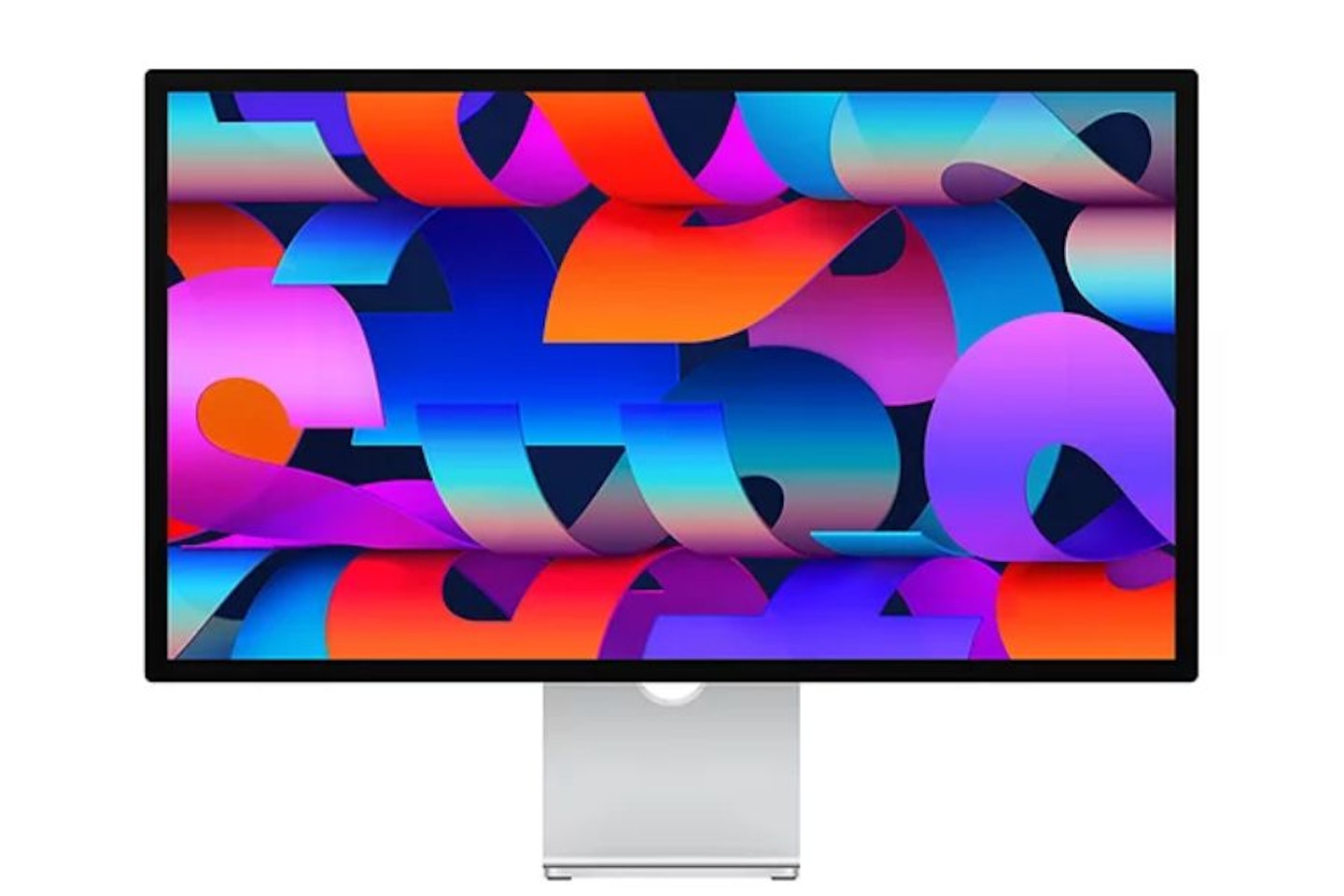 Apple
Apple www.johnlewis.com
If you work from home quite often, you may consider decking out your setup, and for that, you should consider the Apple Studio Display. It's expensive, there's no hiding that, but it justifies its price tag with its performance.
The webcam and microphone are both excellent, so you will be set for calls and meetings at any point of the day. The display is also 5K; that's right, even better than 4K, so you know it's stunning. Combine that with 600 nits brightness and a solid 1ms response time and you easily have the most powerful and visually gorgeous monitor you can buy.
Of course, there's a catch. As it is an Apple product, it has limited compatibility with anything non-Apple. One look at the ports says it all; not a single HDMI connection at all. As such, we can only recommend this monitor to those who already have a Mac as part of their working-from-home setup.
Pros
- Brilliant webcam and mic setup
- Incredible 5K display
- 600 nits of brightness is very impressive
Cons
- No HDMI ports
The best monitors for working from home: buyers guide
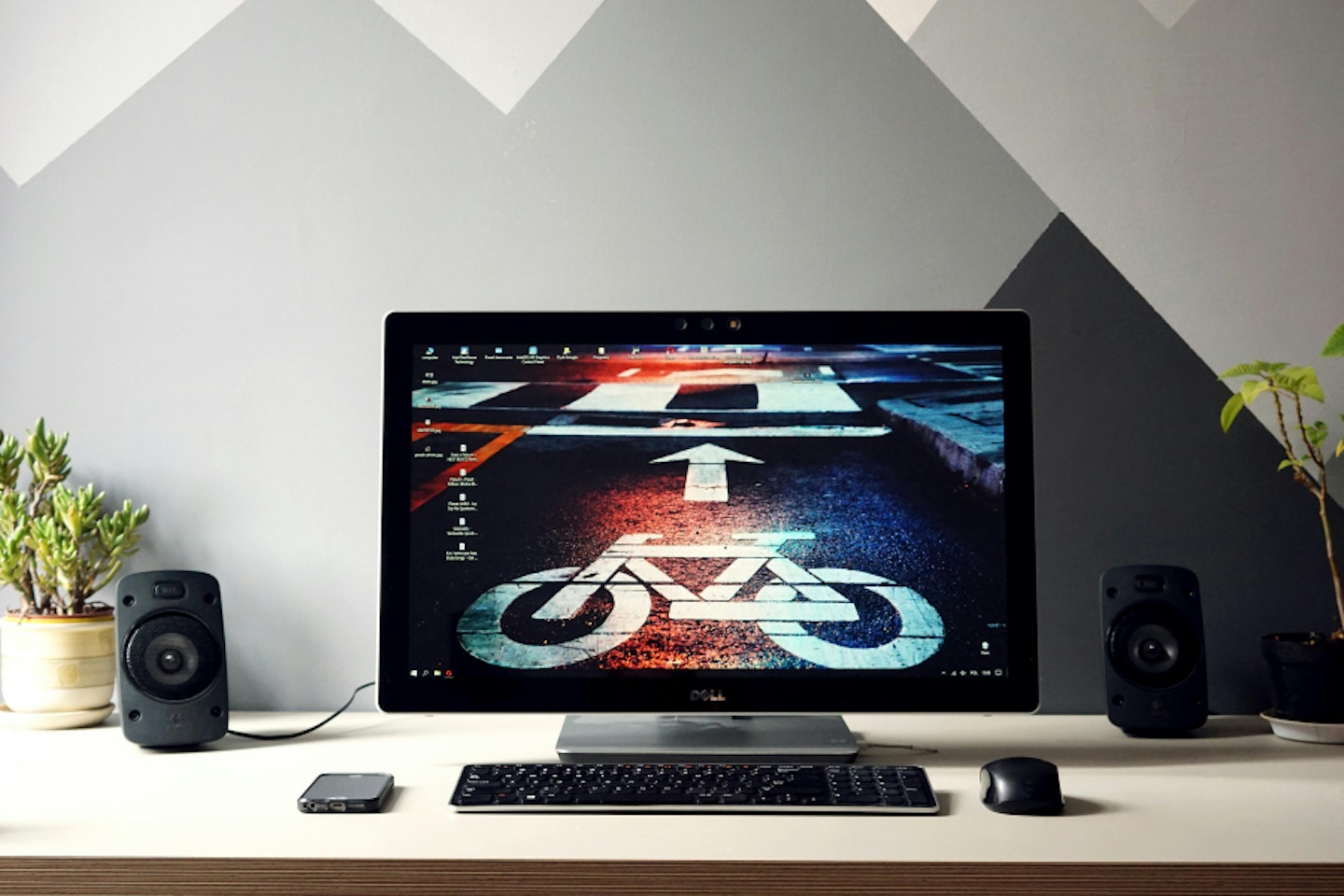
Key terms you need to know:
Resolution:
The resolution of a monitor refers to the amount of pixels onscreen at a single time. The higher the resolution is, the greater the precision of the picture, leading to a more visually pleasing experience.
4K:
4K, or UHD, refers to monitors with a resolution of 3840 x 2160p, or four times that of full-HD.
QHD:
Quad-HD screens have a resolution of 2560 x 1440p, and often offer great refresh rate and response times at the cost of their slightly lower visual quality compared to 4K.
Refresh rate:
Refresh rate is a measure of the amount of times per second a screen can produce a new image. Measured in Hertz or (Hz), the faster the refresh rate, the smoother the image will be overall.
OLED:
OLED, or Organic Light Emitting Diode is a type of screen technology that doesn't utilise a backlight, which standard LED monitors do. The result is gorgeous contrast, along with razor-sharp response times that are often less than a millisecond, giving it an incredibly precise smoothness.
Colour reproduction:
Colour reproduction gives users an idea of how well a monitor can replicate the colours of an object in reality. Using colour gamuts, which are a range of selected colours, monitors often measure how good they are at producing colours of that gamut, the higher the percentage, the better the colour.
HDMI:
High Definition Multimedia Interface, or HDMI, is a system of transferring data from our devices such as laptops, to our screens.
Screen lag:
Screen lag refers to delays in screen responses, which only really happen when running something particularly demanding. If a monitor isn't correctly configured, however, screen tearing may occur, which causes black lines to appear across the monitor screen unless corrected in the settings.
Bezels:
Screen bezels are the edges of the monitor screen, and are becoming dramatically thinner over time.
HDR:
High Dynamic Range, or HDR, is a technology that aims to create higher contrast between the lightest and darkest images onscreen. This dramatic improvement of contrast creates bold, engaging images that exceed a monitor's typical technical capabilities.
What ergonomic features should I look for in a monitor for working from home?
Home working monitors have to be comfortable, it's a given. You're going to be spending a considerable amount of hours on your selected monitor, so you need it to be as comfortable and as engaging as possible.
Curved screens are a great alternative to typical monitors: they're great for fighting eye stress, and when paired with EyeCare technology, which reduces blue light, your setup can become incredibly comfortable.
Height adjustment versatility is also incredibly important, having the freedom to adjust a monitor can transform your setup to one that is open to occasional altering, which is great for posture and for refreshing your setup in general.
What connectivity should I look for in a home monitor?
Depending on how many devices you use, having at least two HDMI ports can be incredibly useful. Having the ability to switch between devices is fantastic, and not fighting with cables each day is worth its weight in gold.
Having DisplayPorts or other inputs is also excellent, and gives you plenty of options in the future for expanding your selection of compatible home devices.
FAQs: your questions answered

What size monitor should you choose for working from home?
While it's up to your preference, we would recommend choosing a monitor around 24 or 27 inches. Any smaller, and you will find yourself struggling to make out fine text and details, possibly needing to hunch up closer to the screen. On the flip side, any larger than 30 inches and you're approaching the size of a small TV, which if you sit close in front of your desk, could damage your eyesight.
Aside from those reasons, there's also a simple, core factor to opt for a monitor around the mid-20s; desk space. With a keyboard and laptop already taking room on your desk, monitors around this size should just be able to squeeze in without taking up too much room. Plus, if you are blessed with a spacious desk, then you can potentially fit two of these monitors.
Should you wall-mount your monitor?
Wall-mounting your monitor is unlikely to make a massive difference in your setup for working from home, but it can have its uses. If your desk is up against a wall and you're struggling with desk space, mounting the monitor up on the wall might just give you the extra bit of space that you need.
You could even fix it with a swivel mount so you can adjust the monitor to match your sitting position as the day goes on. Just be sure to mount it at a comfortable height, as the last thing you want is to be craning your neck up for eight hours a day.
What performance should I be looking for from a monitor for working from home?
This is entirely dependent upon your line of work: if, like most of us, you're working away using word documents or low-demand software, a full-HD screen with a 60Hz refresh rate and 5ms response times is perfect for getting the job done.
If, however, you're working creatively, or you're creating a gaming simulation amidst programming work, you'll want to have top-tier specifications on hand. Look for brilliant 4K monitors, or if performance is more your concern, seek out 120Hz monitors with ultra-low response times.
Kyle Purves is a Commercial Content Writer for What’s The Best, with an avid interest in all things gaming and tech.
They’re well-versed in reviewing a variety of tech products, with a soft spot for speakers and earphones. They’re also no stranger to hunting down the best savings, always wanting to get the best deal possible. Outside of work, they can often be found playing through an RPG, listening to Japanese noise rock, or trying to catch up with their ever-expanding list of shows and anime to watch. If possible, they try to play Dungeons and Dragons a couple of times a week, but getting six adults to be free at the same time is easier said than done.
Subscribe to the What’s The Best Newsletter to keep up to date with more of the latest reviews and recommendations from the rest of the What’s The Best team.
